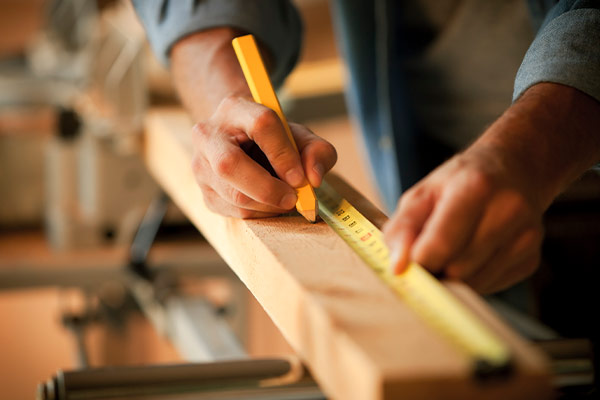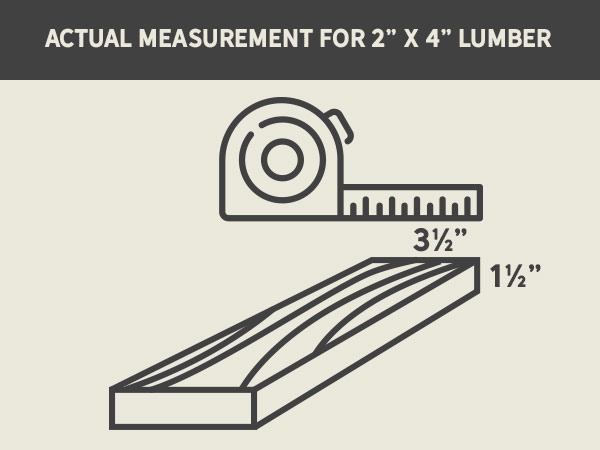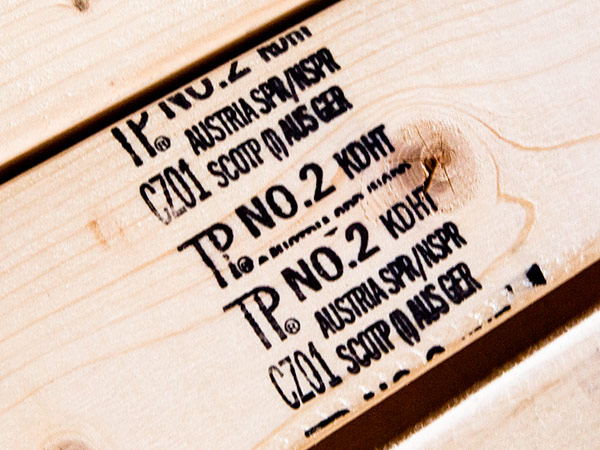

All About Dimensional Lumber
A 2x4 piece of lumber means it‘s two inches by four inches… right? Not exactly. Dimensional lumber may not be all as it seems on face value, but that doesn’t mean there isn’t a method to this madness. Before your next project, let the lumber pros guide you through the lumberyard so you pick the right lumber for your project.
Dimensional Lumber: 2 Different Sizes?
Dimensional lumber is cut from logs and milled or made into pre-determined sizes. Think 2x4 or 2x6. These are standard sizes that can be found at just about every lumberyard. These sizes are normally applied only to softwood as that lumber is heavily used in the construction industry. This is done because contractors and even DIYers need set sizes so they can be sure they are getting the correct size of lumber every time. This also helps to minimize waste at lumber mills as the machines that cut lumber are calibrated to find the most efficient way to cut the log into different dimensional pieces.
Fun fact: 2x4 and 2x6 lumber are common sizes as they are used for a variety of building applications including the framing on a house and trusses, a deck with pressure treated wood, and down to smaller DIY projects.


Note: While other wood products such as plywood or OSB have sizes, they are not considered dimensional lumber as they are panels or sheets of wood.

Lumber sizing will have two to three numbers in inches separated by an “x”. To read this: To read this: depth x width x (or “-“) length. However, when it comes to sizing dimensional lumber the depth and width is the measurements to look at. Any piece of lumber that is cut into pre-determined sizes are considered dimensional lumber, but there are some different classifications. Anything five inches or thicker is considered timber, 2x4 or 2x6 are considered “narrow” by width, and anything more than six inches is considered wide.
There are two different ways to look at the size: nominal measurements or actual. Nominal, meaning only in name, is the size of your lumber after it was initially cut when the tree bark was removed after being felled. This is its rough green or sawn cut, and if it is western red cedar, you can even buy your lumber at this stage should you want a rustic look.
After this, your piece moves through the dry kiln, where it will be dried enough to be able to plane it smooth. Drying the lumber shrinks it, and will be smaller after surfacing, making the 2x4 dimensions smaller than when it started. The final piece you’ll purchase is about 1/2 inch smaller in both dimensions, so your 2x4 is really 1 1/2 x 3 1/2. If your nominal size lumber is 1 inch in depth or width, it will be 1/4 of an inch smaller. Length can be anywhere from 3/8 inch to 2 inches longer than the stated size.

Grading of Dimensional Lumber
Lumber is graded much like a grade on a test. Your answers must match up to a certain standard. Grading on dimensional lumber is based on strength, use, and, finally, appearance as structural integrity is of the utmost importance in all building materials. In contrast, hardwood is mainly graded on appearance. Grading is done by different grading agencies depending on where in the country the lumber has been milled and/or the species of wood. Lumber can be visually graded, or machine graded.
- Structural Framing and Joists/Planks are given a number grade from best at 1 and down to 4. All number grades are strength grades. There is still a higher grade: select structural which is based on the highest strength and good appearance.
- Light Framing is given grades based on usage: construction (good appearance, but has superior strength), standard (good strength, slightly less desirable in appearance), utility (good or serviceable strength).
- Studs are their own grade. Studs are used for load-bearing walls and have their own set of grading characteristics.
- Appearance grade lumber is graded based on how it looks and is used in applications like trim. There can be hybrid grades that express both strength and appearance.


You can find the lumber grade stamped on the piece of wood itself along with other information. Labels on wood are standard and include:
- Trademark of grading agency (under the ALSC, American Lumber Standard Committee)
- Mill identification number
- Lumber grade
- Species of wood
- Moisture content:
- S-DRY kiln-dried to 19%
- S-GRN or HT unseasoned, moisture over 19%. HT= Heat Treated. This means that it was treated at a high heat long enough to kill any bug regardless of moisture content.
All Your Lumber Needs
Now you that you know how your lumber is sized and graded, you’re ready to start building. Drop by our in-store “lumber buffets” or our full-service lumberyard where we have a wide variety of top-grade lumber to fit your needs. Need some help picking out your lumber? Our experienced yard crew will be glad to help you pick your lumber and load it for you too.

Reviewed by Tom Hastings
McCoy's In-House Expert

